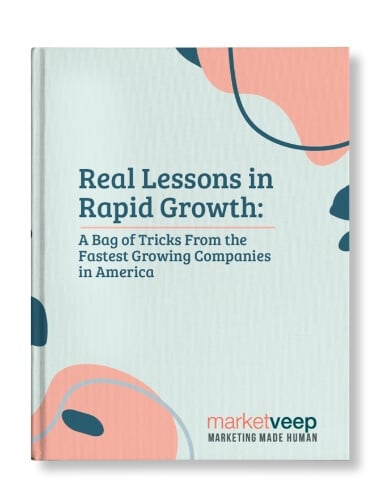Understanding the Strategy Stage of Growth-Driven Design

 When you purchase through links on our site, we may earn an affiliate commission.
When you purchase through links on our site, we may earn an affiliate commission.
By Jennelle McGrath
During the strategy stage of Growth-Driven Design, stakeholders work to understand their users, set goals, and build a wishlist or their website. This is perhaps the most important stage of the GDD process. The diligence you give the strategy stage will determine the success of your website.
Growth-Driven Design is made up of 3 different stages. The strategy stage is the first, followed by the building of a launch pad website, and ending with a continuous improvement stage.
Each set up the foundation for the next stage to build off of until you reach the continuous improvement stage. This final stage is a repeatable cycle intended to make changes and implementations that improve the user experience and boost you towards your goals:



Typically, the strategy stage of Growth-Driven Design is what makes or breaks the success of the process. If the correct amount of energy and planning is put into this stage, it will set up a great foundation for the rest of the website to be built off of.
Usually, when companies choose to omit the strategy stage, they wind up with a website that looks nice but misses the mark and doesn’t connect with their audience.
It is vital that the strategy stage is given the attention it deserves. Spending time in this stage will ensure everyone on the team has a fundamental understanding of their users, what was wrong with their previous website, and what their competitors are doing right.
Having everyone on the same page and knowledgeable about the project means they can collaborate and plan together. A little bit of research and planning will streamline the whole process and allow the project to run smoothly.
In the strategy stage, the goal is to gain an understanding of your audience and how your website can best help them along their journey. By understanding our audience, their problems, and desired outcomes, we are able to create a website that provides the best experience possible while seamlessly guiding them through their journey.
The strategy stage of Growth-Driven Design also allows for collaboration between the development team and stakeholders. Together, they look at all of their options and decide on a strategy to guide the website through the redesign process.
Goals
When setting goals for the new website,consider the overall mission of your company. What impact do you wish to make in the world? How can this website move you closer to this mission? Use this to develop a few different goals for the website. These goals will be the initial starting point for the launch website and create different focus areas for the team to zone in on.
Once a few goals have been set, think of a few different plays that could be made to achieve these goals. If the goal is to generate more leads, think about different ways this could be done and develop a strategy for achieving this goal. For example, you could:
- Place CTAs in conspicuous places.
- Add contact forms and CTAs to each page.
- Place an emphasis on gated content if your customers have a longer buying cycle.
- Make use of Thank You pages by including a CTA to similar content the user may be interested in.
User Testing
In order to build a website for you audience, you must firstknow what it is your audience wants. Conducting user testing allows you to gather feedback directly from your clients and website visitors. This feedback will be used to gain a better understanding of who your users are, their wants from the website, and any pain points they may be encountering along their journey.
Along with user testing, run an audit on your current website to see where the site struggled and where it was effective.
Heatmaps and live videos ofreal interactions are a great way to determine how your users are interacting with your site. They show where users click, how far down they scroll, and where their cursor moves on your website.
Are users focusing on the areas you want them to be focusing on? If not, what areas are grabbing their attention and why is this happening? Data gathered directly from users and their interactions is the key to making impactful improvements on the new launch pad website.
Going through this process with any competitor websites will also provide you with valuable insight as to what is working and not working for them. Knowing what works and what does not will ensure the same mistakes are not made again.
User testing coupled with data from the previous website provides a solid foundation for the launch pad website to be built off of. Now, everyone can be confident that implementation decisions are being based off of actual data rather than assumptions.
Jobs to Be Done
In order to best solve a users’ problems, it is important to understand the reasoning behind why they have that problem in the first place and why they choose your product to solve it. This is done best by creating a job story.Job stories are short fictional stories that explain who your users are, including their situation, what goal they wish to achieve, and why they wish to achieve this goal.
Use job stories to develop a complete overview of your product. The better you understand your product and the motivation people have for using it, the better you can tailor their journey through your website to provide the best experience.
Website Strategy
After all of the initial user testing and data has been collected, a strategy can be built.A website strategy will act as a guide for the whole growth-driven design and development process. Considerations such as goals, branding, architecture, and technical setup will all be planned out during this step.
When it is time to develop the strategy for the website, gather everyone together to collect all data and information in one place.
To begin, gather all of the previously decided goals, buyer personas, and jobs to be done in one place so they can be reviewed and finalized. These are important parts of the strategy that can sometimes be overlooked. Collecting everything can put your goals in perspective and allow you to develop a strategy that suits you best.
Competitor Analysis
When deciding on the strategy for your new website, it’s often best to start by looking at your competitors.
Run an audit on their website to get a better understanding of what they are doing. Look at how their website is structured and how they are leading their customers through the buyer's journey. Learn what sets the companies apart and why a customer may choose one over the other.
Whether their website is performing well or not, there is always something that can be learned. Your competitors are a well of industry knowledge that you don’t have to dig yourselves.
Website Architecture
The next job to tackle when creating a website strategy is the websites navigation and architecture. These will play a large part in affecting your users experience.
A website’s architecture should be developed with a focus on both SEO and the buyer’s journey. The goal will be to create a website that improves SEO while also maintaining the user experience. It should guide the user from stage to stage of the buyer’s journey in a natural way.
This is where navigation comes into play. Creatinguser flows allows you to visualize the steps it takes for a user to navigate from a starting point to the desired end goal. Using user flows can help you identify any problems with the navigation and allow you to create a natural flow from one page to the next.
It’s a bit of a balancing act trying to achieve great SEO results and guide the user along their buyer’s journey. Too much focus in one area can cause problems in the other. So take your time with this step and use what you’ve learned from your previous website, competitors, and users to create the ultimate architecture.
Technological Considerations
Some other aspects to consider when creating your website’s strategy are any technological considerations that need to be addressed. Create an SEO strategy for the website. Brainstorm the major keywords and how you will setup the website for the best results. Identify any third party applications or tools that are being used and where problems may occur with integration.
Also, decide on any frameworks the website will be using. Try to uncover any problems now so they do not become a headache down the road when the website is being built.
Often overlooked when developing a website’s strategy is how it can be used by the company. A website does not have to just help a single department. It can be used to aid many different departments achieve their goals.
Marketing can use it to put out more content for increased traffic and leads. Human resources can use it to filter through and find qualified candidates to join the company. Customer service will be able to use it as a tool to gather feedback from your customers and build relationships. Sales might use it to book meetings and interact with users.
The point is that the website is not a tool for any single department. It is a tool the whole company can benefit from. Brainstorm how different departments could use the website and what would be needed.
Realistically, not every department will be able to leverage the website after the initial launch, but planning out how it can have an impact throughout your company means you can add these ideas to your wishlist for future implementation.
Wishlist Generation
The website’s wishlist is a collection of ideas that will help achieve the website’s goals and solve user’s problems. Generally, wishlist items can be divided into different categories that all share a common goal. From there, they are broken down and prioritized into groups based on the overall impact they will have on the website.

When initially developing a wishlist, it is key that everyone can voice their ideas and a collective brainstorm takes place. People with different backgrounds and skill sets may be able to come up with ideas that others will not. This will create a wide pool of ideas to choose from down the road.
When to Move On to the Launch Pad Website
It’s time to build a launch pad website when the whole team feels they have learned enough from the users, the previous website, and competitor websites to create a clear plan moving forward. The goal of the strategy stage in growth-driven design is to arm yourself with as much knowledge and insight as you can, so the launch pad connects with users and drives you towards achieving your goals.
Get The Latest From
Market Veep
RELATED ARTICLES

Embracing Digital Marketing Strategies in Industrial Markets
After all, traditional marketing that focuses on in-person sales visits and printed marketing...

Event Marketing Examples for Every Funnel Stage
But exactly what is event marketing, and how can you incorporate it into your overall marketing...

Exploring the Latest Manufacturing Marketing Trends
Manufacturing marketing trends are no exception, as many top companies now rely on digital...

Get Growing!
Download our eBook and get advice from 8 CEOs of Inc. 5000 companies in their own words.

GREAT MARKETING PARTNER
Market Veep is a great firm that handles all of our marketing efforts. This is the second time that I have used the firm. I highly recommend Market Veep!

Cres F.

EXCEPTIONAL EXPERIENCE
Market Veep's Onboarding Experts in Inbound Marketing are an absolute game-changer! From the get-go, their approach was top-notch. Market Veep's team has undoubtedly set the bar high for excellence in inbound marketing. Five stars aren't enough to commend their outstanding service!

Matthew W.

BEST PARTNER EVER!
As a growing business, setting up our first-ever HubSpot account was a crucial step towards enhancing our marketing and customer management strategies. From the moment we contacted MarketVeep, their team demonstrated professionalism, expertise, and a genuine desire to help us succeed. Overall, our experience with MarketVeep was exceptional, and we couldn't be happier with the results. Thanks to their guidance, we are now utilizing HubSpot to its fullest potential, streamlining our marketing efforts, and nurturing leads more effectively.

Jean M.

SET UP FOR SUCCESS!
We had an exceptional experience with Market Veep! Their team is professional, super organized, and friendly, and I truly enjoyed working with them. They executed on time and made the process super easy with their organization and documentation. In addition, they provided additional guidance and answered my many questions as I was new to HubSpot, and provided documentation resources for future use. We're now set up to leverage all that HubSpot marketing has to offer, and we couldn't have done it without Market Veep's expertise.

Bailey G.

5 STARS FOR MARKET VEEP!
We had a fantastic experience with Market Veep! Their expert team seamlessly guided us through implementing HubSpot and provided comprehensive training across Sales, Service, and Marketing Hubs. Their knowledge and support significantly enhanced our workflow and overall efficiency. Highly recommend Market Veep for top-notch HubSpot solutions!

Anneke C.









